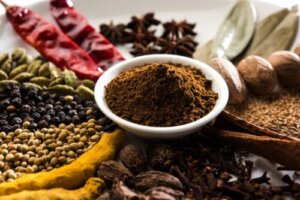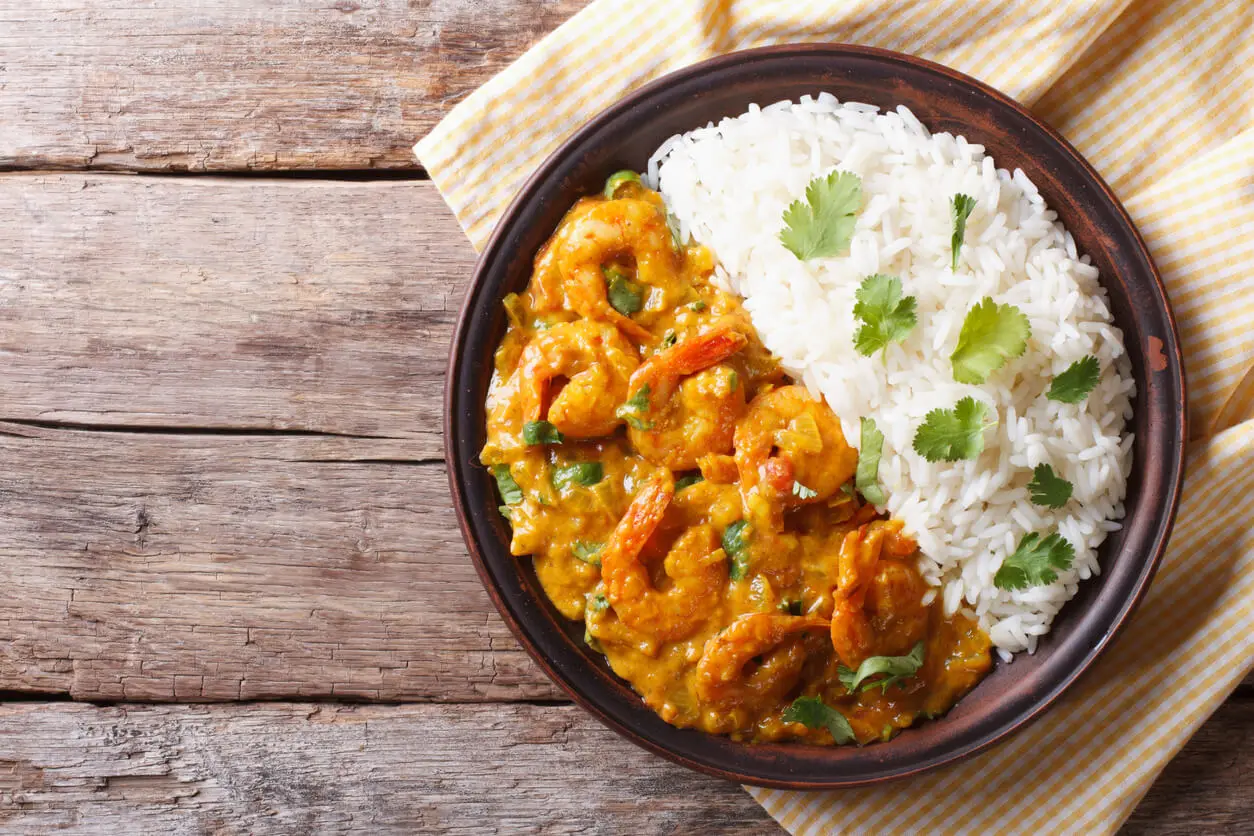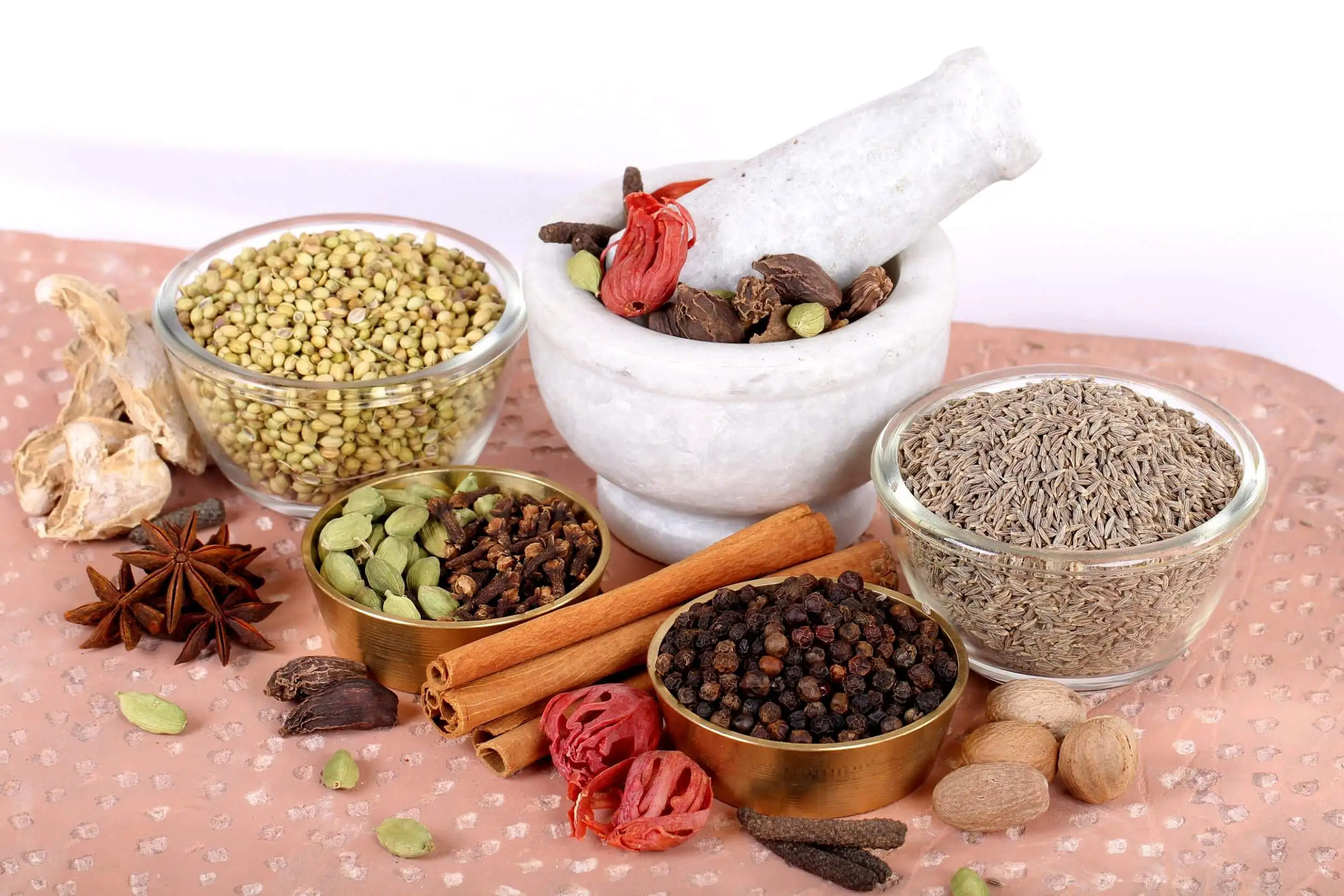Garam Masala: What It Is and How to Make It


Written and verified by the nutritionist Saúl Sánchez Arias
Garam masala is a blend of culinary spices used mainly in oriental cuisine. It gives a rather unique flavor to dishes and also improves their nutritional density. Above all, it stands out for the presence of phytochemicals, compounds whose importance we’ll discuss a little later.
Before we begin, we’d like to mention that the use of spices in cooking is recommended by most nutrition experts.
Keep reading because we’re going to tell you how to prepare it!
What is garam masala?
As we have already mentioned, garam masala is made from a blend of spices, namely coriander seeds, cumin, cinnamon, cloves, nutmeg, cardamom and black pepper. However, there’s no set recipe or ratio. Both the number of spices and their proportion can change, depending also on the part of the world it’s made in.
However, it’s a recipe that can be bought already prepared in the supermarket. However, it’s advisable to buy it in a spice store, as its organoleptic quality will be much higher.

We’re sure you’ll be interested in: Fat-Burning Spices You Probably Already Have
Storage and use
The best way to preserve the benefits, aroma and incredible flavor of garam masala is to put the spice mixture in a tightly closed glass jar and keep it away from light and heat.
To use garam masala, simply add it to various dishes and sauces. It goes well with curries, stews, casseroles and vegetable recipes. However, it should always be added at the end of the cooking process, unlike other culinary spices.
You may also be interested in: Nine Spices that Speed Up the Metabolism
Benefits of garam masala

First of all, special emphasis should be placed on the antioxidants contained in this condiment. They neutralize the formation of free radicals and their subsequent accumulation in the body’s tissues. This mechanism has been shown to help prevent the development of chronic pathologies.
Moreover, this preparation contains cinnamon. This substance is key to help prevent and manage diabetes, as stated in research published in the journal JPMA. It can reduce blood glucose levels, which also reduces the need for insulin and the resistance to it by the body’s cells.
Finally, it must be said that it contains an element called capsaicin, responsible for its spicy flavor. This compound increases the body temperature and energy expenditure. There’s evidence that it contributes to stimulate the oxidation of fats from this process.
Prepare at home garam masala
As you’ve seen, preparing garam masala at home is really simple. It’s a combination of culinary spices that can be added to many different dishes, improving their organoleptic characteristics and providing quality phytochemicals with high antioxidant capacity. For this reason, we recommend its use on a regular basis.
All cited sources were thoroughly reviewed by our team to ensure their quality, reliability, currency, and validity. The bibliography of this article was considered reliable and of academic or scientific accuracy.
- Neha, K., Haider, M. R., Pathak, A., & Yar, M. S. (2019). Medicinal prospects of antioxidants: A review. European journal of medicinal chemistry, 178, 687–704. https://doi.org/10.1016/j.ejmech.2019.06.010
- Sharma, S., Mandal, A., Kant, R., Jachak, S., & Jagzape, M. (2020). Is Cinnamon Efficacious for Glycaemic Control in Type-2 Diabetes Mellitus?. JPMA. The Journal of the Pakistan Medical Association, 70(11), 2065–2069.
- Varghese, S., Kubatka, P., Rodrigo, L., Gazdikova, K., Caprnda, M., Fedotova, J., Zulli, A., Kruzliak, P., & Büsselberg, D. (2017). Chili pepper as a body weight-loss food. International journal of food sciences and nutrition, 68(4), 392–401. https://doi.org/10.1080/09637486.2016.1258044
This text is provided for informational purposes only and does not replace consultation with a professional. If in doubt, consult your specialist.








